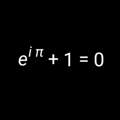DGL 2. Ordnung?

Hallo,
wie würde man diese DGL 2. Ordnung lösen?
ich habe bisher als homogene Lösung c*ce^-2x.
bei der partikulären Lösung habe jedoch Probleme, da neben y‘‘ und y‘ ein „normales“ y fehlt.
wie kommt man da auf die partikuläre Lösung?
2 Antworten

y" + 2 y' = 0
Ansatz: y = e^(cx)
=> (c² + 2 c) e^(cx) = 0 <=> c = 0 ∨ c = –2
y_h = c ∨ y_h = c e^(–2 x)
___
y" + 2 y' = 4 + 12 x²
Ansatz: y = a x⁴ + b x³ + c x² + d x + e
=> (12 a x² + 6 b x) + 2 (4 a x³ + 3 b x² + 2 c x + d) = 4 + 12 x²
8 a x³ + (12 a + 6 b) x² + (6 b + 4 c) x + (2 d + 2 c) = 12 x² + 4
=> a = 0; b = 2; c = –3; d = 5.
y_p = 2 x³ – 3 x² + 5 x
___
y_A = 2 x³ – 3 x² + 5 x + c
y_A = 2 x³ – 3 x² + 5 x + c e^(–2 x)

Als erstes löst du die homogene Dgl mit x^2+2*x = 0. Dann kannst du entweder mit einem passenden Ansatz rechnen (wahrscheinlich ein Polynom) oder mittels Variation der Konstanten.

Deine homogene Lösung stimmt aber nicht, es ist c1+c2*exp(-2*x)

Und über den Ansatz eines Polynom vierten Grades mit ax^4 + bx^3 + cx^2 + dx + e komme ich auf y_par = 2*x^3-3*x^2+5*x


Das hilft mir nicht weiter.
die homogene Lösung habe ich ja bereits.
bei der partikulären Lösung ist der Störfaktor ja ein polynom 2. Grades. Bei diesem Ansatz habe jedoch Probleme bei der Bestimmung der Koeffizienten, da ein „y“ in der Differentialgleichung fehlt.